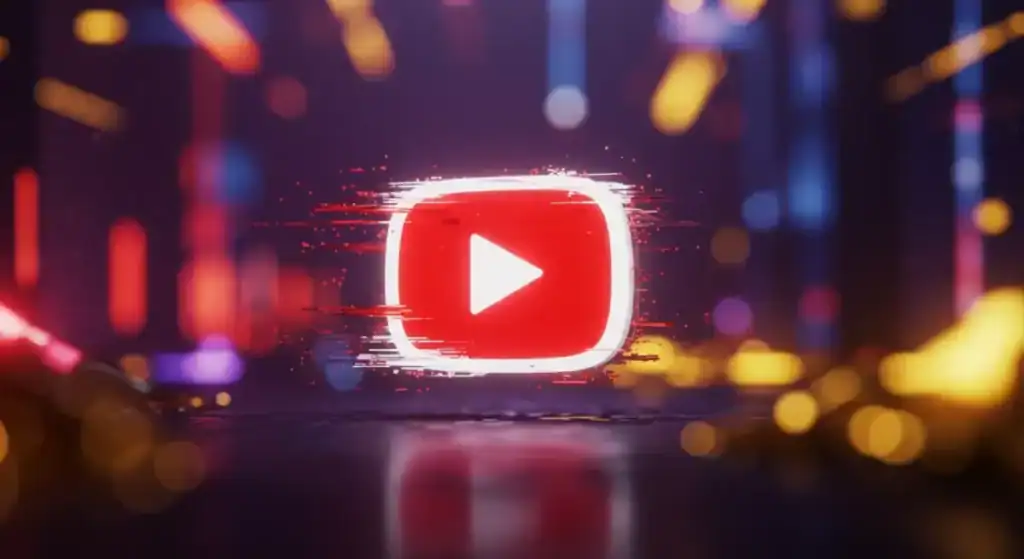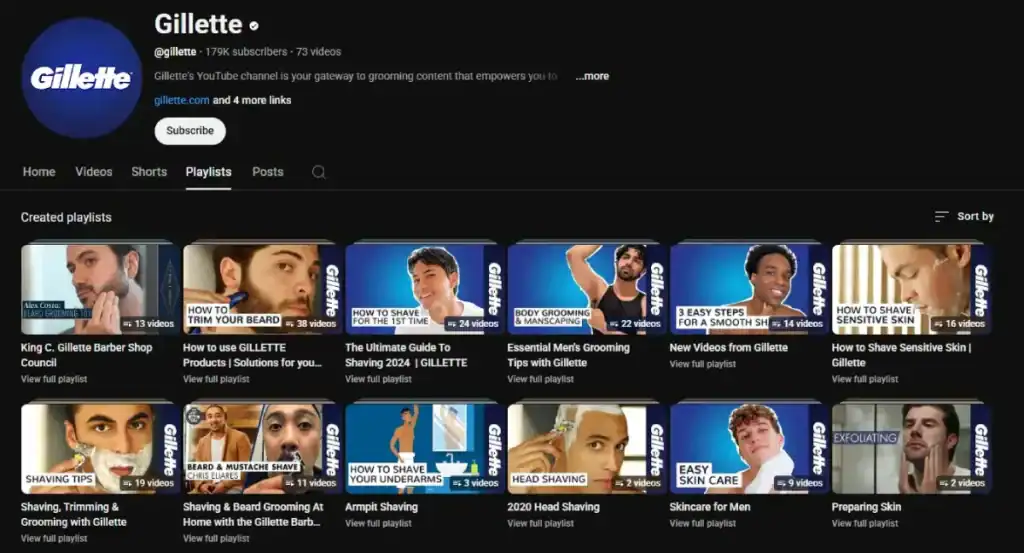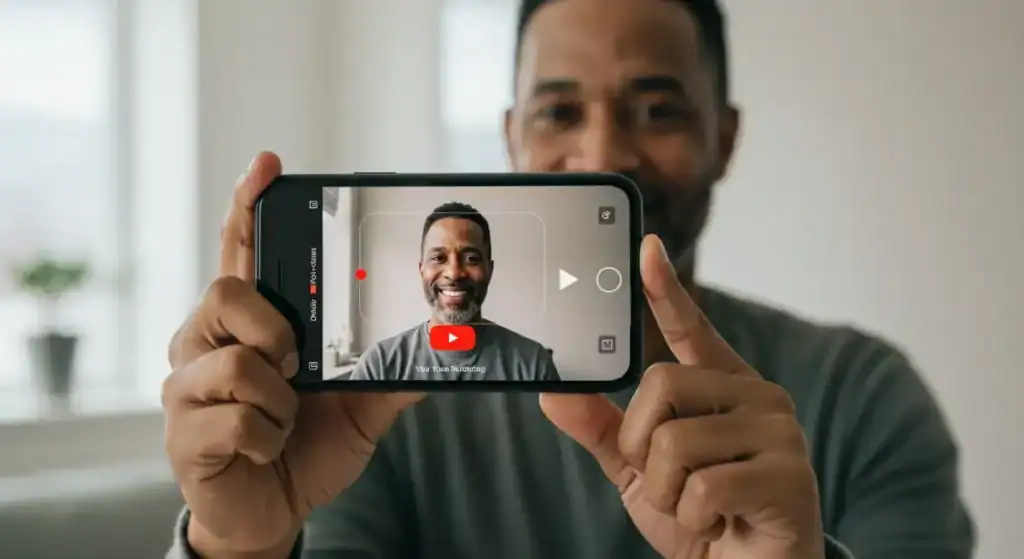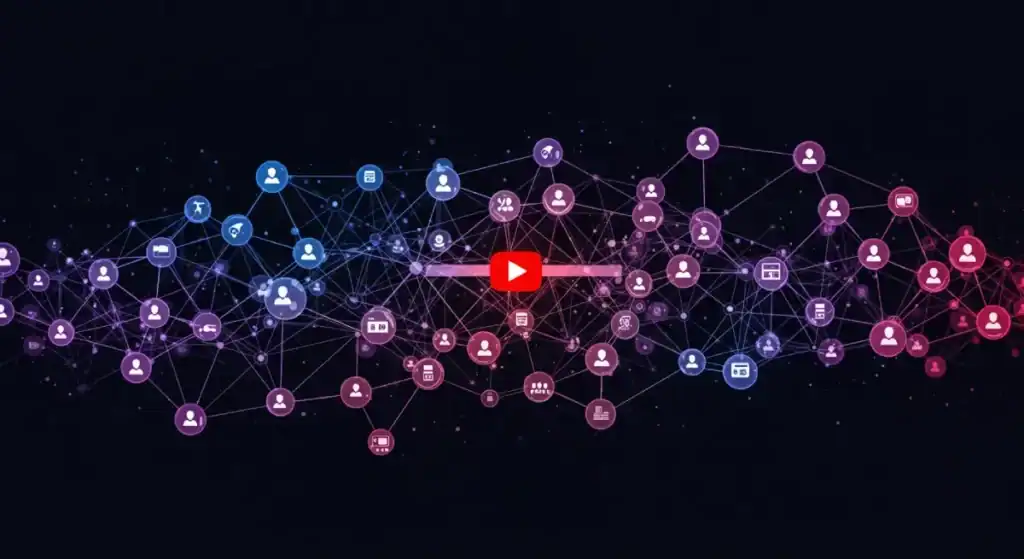YouTube Marketing: From a Costly Hobby to a Lead Machine
For most businesses, YouTube is a fantastic way to set fire to a pile of money.
It’s an abyss where good intentions, countless hours, and marketing budgets go to die a slow, silent death, marked only by a pitifully low view count.
You’ve been told it’s the future of marketing. You have to be there. So you buy a camera, make a few videos, and upload them… and nothing happens. You conclude that YouTube “doesn’t work for my industry.”
It does. You’re just doing it wrong.
This isn't another guide full of fluffy advice about “finding your passion” or “being authentic.” This is a brutally honest look at why you're failing and a practical framework for how to stop.
This is about turning YouTube from a costly hobby into a predictable lead-generation machine.
- YouTube can be a costly hobby without a clear strategy and defined goals for video content.
- Focus on creating valuable content rather than chasing vanity metrics like views and subscribers.
- Identify your target audience precisely and understand their problems to create relevant videos.
- View YouTube as a search engine, providing solutions to specific queries of your ideal customers.
- Consistency and quality content are essential; authority built over time leads to trust and business growth.
Why Your Business is Failing on YouTube

Before we get to the fix, we need to diagnose the disease. Most businesses on YouTube fail for one of three depressingly common reasons. See if any of these sound familiar.
You're Guilty of “Directionless Activity”
This is the biggest culprit. You’re making videos because you feel you should be making videos. You have no strategy or defined goal for what each video is meant to achieve. You're just… making stuff.
There's a dangerous “Field of Dreams” fallacy in digital marketing: “If you build it, they will come.” It's a complete lie. You'll scream into a void in YouTube's noisy, crowded world if you just build it. Directionless activity is the enemy of profit.
You're Chasing Worthless Ghosts: Vanity Metrics
You’re obsessed with subscribers and views. Every new sub gives you a little dopamine hit. You see a video get 1,000 views and think you’re making progress.
One hundred thousand subscribers who will never buy from you are worth infinitely less than 100 of your perfect potential customers. Chasing views for the sake of views leads you to create content for a broad, non-committal audience, not the specific people who will pay your invoices.
Your Videos Have the Personality of a Corporate Memo
The third killer is fear. You're so afraid of saying the wrong thing, looking unprofessional, or what a competitor might think, that you strip all personality from your content.
Your videos are scripted by committee, polished to a sterile sheen, and delivered with the charisma of a hostage reading a script. Here’s a secret: people connect with people. They trust individuals. They are repelled by faceless, soulless corporate entities that talk in jargon.
The Only Question to Answer Before You Spend a Single Penny
To stop wasting time and money, you must stop thinking about video ideas, cameras, and lighting. You need to answer one fundamental question, and you need to answer it with brutal honesty.
The question is twofold: Who is this for, and why should they give a damn?
Who Is This For? No, Really?
Don't say “small business owners” or “people interested in finance.” That's lazy and useless. Who exactly are you trying to reach?
Get specific. Painfully specific.
- “A 35-year-old freelance graphic designer in Manchester who is brilliant at design but terrified of handling their taxes.”
- “A 50-year-old homeowner in Kent whose boiler is making a funny noise and they’re trying to decide if they can fix it themselves or need to call a professional.”
When you know exactly who you're talking to, you know what language to use, the problems, and solutions they're looking for. Trying to appeal to everyone appeals to no one.
Why Should They Give a Damn?
Once you know who you’re talking to, you have to figure out the value proposition of your video. Not your business, your video. What problem are you solving for that specific person right now?
People don't go to YouTube to be sold to. They go to be educated, entertained, or to solve a problem. Your video must do one of these things and do it effectively. The ‘why' is your promise in your title and thumbnail. If you don't have a compelling ‘why, ‘ you don't have a video.
Forget Viral. Build a Library, Not a Lottery.
The obsession with “going viral” is a fool's errand. A viral hit is a lottery ticket—a random stroke of luck that is non-replicable and rarely builds a sustainable business. You don't need a million views on one video. You need a thousand opinions on fifty videos from the right people.

See YouTube as a Search Engine for Problems
Stop thinking of YouTube as a social media platform. Start thinking of it as the world's second-largest search engine. What do people do with search engines? They ask questions. They look for solutions.
- “How to fix a leaking tap”
- “What is the best accounting software for a sole trader?”
- How to write a business proposal”
Your job is to make your business the answer to those questions. Every video you create should be a clear, concise, and valuable answer to a specific problem your ideal customer is searching for.
Example: A Brutally Boring (and Profitable) Channel
Imagine you're an accountant. The thought of making YouTube videos is soul-crushing. What on earth would you talk about?
Don't think about entertainment. Think about problems. Your content pillars could be:
- Tax Tips for Freelancers: Short, actionable videos like “Top 5 Allowable Expenses You're Missing” or “How to Fill Out Your Self-Assessment.”
- Business Structure Explained: Simple videos breaking down “Sole Trader vs. Limited Company” or “What is a Director's Loan?”
- Bookkeeping Software Reviews: Honest reviews of Xero, QuickBooks, etc., for your specific client type.
Is it exciting? No. Is it viral? Absolutely not.
But for the freelance designer terrified of their taxes, you just became the most valuable resource on the internet. You built trust.
When it comes time for them to hire an accountant, who will they call?
This is precisely what a company like Ahrefs does for the SEO world—they answer every conceivable question with immense value, building unshakable authority.
That £5,000 Camera vs. The £5 Idea
Now we come to one of my biggest pet peeves. Gear obsession. It’s a classic form of procrastination. Entrepreneurs who are uncertain about their strategy will spend weeks researching cameras and months fiddling with lighting because it feels like productive work. It isn't.

Your iPhone is Good Enough. Your Idea Isn't.
I once had a client who spent over ten grand on a professional camera setup, lenses, lights, the works. His office looked like a small film studio. I remember the faint smell of stale coffee and desperation. In six months, he’d produced two videos that got 37 views combined. He was so focused on the tech that he forgot any good ideas.
Conversely, another client started with an iPhone propped up on a stack of books. But he knew exactly who his audience was and what problems they had. He filmed short, direct videos answering their most pressing questions. Today, that channel is a primary source of six-figure leads for his consultancy.
Your smartphone shoots in 4K. It's more than good enough to start. A brilliant idea filmed on a phone will consistently outperform a terrible idea filmed in a Hollywood studio.
The One Thing You Can't Skimp On: Audio
Here’s the exception. While you can get away with average video quality, you cannot get away with bad audio. Surprisingly, people forgive grainy or shaky footage if the content is valuable. But if they can't hear you clearly, or if there's an annoying echo or background hiss, they will click away instantly.
Forget the new camera. Spend £30 on a simple lapel microphone that plugs into your phone. It is the single highest-leverage investment you can make in your video production.
Your Title & Thumbnail Are 90% of the Game.
This might be hard to swallow. The quality of your video is irrelevant if nobody clicks on it. You could have the cure for cancer in your video, but if the packaging is rubbish, no one will ever see it. Your title and thumbnail are the packaging. They are your sales pitch.
What is Click-Through Rate (CTR) and Why It's Your First Hurdle
Click-through rate (CTR) is the percentage of people who see your video in their feed or search results and click to watch it. If 100 people see your thumbnail and five people click, your CTR is 5%.
This is the first gatekeeper of success. A high CTR tells YouTube, “Hey, people seem interested in this.” A low CTR tells YouTube, “This looks boring, let's stop showing it to people.” You have to win the click before you can do anything else.
How to Make Thumbnails That Don't Look Terrible
You don't need to be a graphic designer. Use a tool like Canva. The principles are simple:
- Clarity: It should be obvious what the video is about in a split second. Use large, bold text.
- Emotion: A human face showing an appropriate emotion (surprise, frustration, curiosity) works wonders.
- Consistency: Use similar fonts, colours, or layouts so that people start to recognise your videos at a glance.
Look at what the top creators in your niche are doing. Don't copy them, but analyse what works. It’s usually a simple formula.
Writing Titles That Get Clicks Without Being Clickbait
A good title makes a clear promise and sparks curiosity.
- Promise a Benefit: “How to Create Your First Marketing Budget”
- Use Keywords: Think about what people are typing into the search bar. Tools like TubeBuddy or VidIQ can help with this.
- Spark Curiosity: “5 Common Mistakes First-Time Homebuyers Make” is more compelling than “Tips for Homebuyers.”
Combining a clear title and a compelling thumbnail escapes that first critical hurdle.
Demystifying The “Algorithm” God

People talk about the “YouTube algorithm” like it's some angry, mystical deity that must be appeased with arcane rituals. It's not. The algorithm is far simpler and less emotional than you think.
It's Not a God. It's a Waiter.
Think of the YouTube algorithm as a server in a restaurant. Its only job is to make the customer happy. The customer is the viewer. The waiter's goal is to bring the viewer a video they will enjoy so much that they stay in the restaurant (YouTube.com) and order another dish (watch another video).
That's it. That's the entire secret. The algorithm's job is to promote videos that demonstrably satisfy viewers. Your job is to make those videos.
The Two Metrics That Signal Satisfaction
So, how does the waiter know if the customer liked the dish? It watches to see if they ate it all. On YouTube, this translates to two key metrics:
- Audience Retention: What percentage of your video did people watch, on average? If people are clicking away in the first 10 seconds, you have a problem. Your intro isn't hooking them, or you're not delivering on the promise of your title.
- Average View Duration (AVD): How many minutes and seconds, on average, did a viewer watch? A longer AVD signal to YouTube that your content is engaging and valuable.
Stop worrying about appeasing some mythical beast. Focus on creating videos that are so genuinely useful or interesting that people can't help but watch them all through. If you do that, the “waiter” will start serving your content to more and more people.
From Viewer to Customer: Building the Bridge
Let's be clear: AdSense revenue is a distraction unless you're Mr Beast. The goal of YouTube marketing for a business is not to make a few quid from ads. The goal is to generate qualified leads and drive sales. Your YouTube channel is the top of your marketing funnel.
The All-Important Call to Action (CTA)
You must tell people what you want them to do next. Do not be shy or subtle about it. At a relevant point in your video and in your description, give a clear, direct Call to Action (CTA).
- “If you're a freelancer struggling with this, I have a free tax checklist you can download. The link is in the description.” (This is a lead magnet.)
- “To see how we implement this for our clients, visit our website to learn more about our services.”
- “Ready to get a quote for your project? Click the link below to book a free 15-minute call.”
Your Website is the Destination
YouTube is where the introduction happens. Your website is where the business gets done. Every relevant video should be a bridge that leads viewers to a specific page on your site—a blog post, a service page, or a contact form. If you're serious about turning viewers into customers, you need a professional digital presence to send them to. Investing in your content strategy on YouTube without a solid digital home is like building a beautiful signpost that points to an empty field.
Our team spends its days neck-deep in this stuff, connecting content strategy to real business goals. If you want expert eyes on your brand's presence, that's what our digital marketing services are for.
The best place to start is to request a quote for a direct conversation about your specific needs.
The Real Cost and The Real Payoff
So, after all this, is it worth it? Yes, but you need to be realistic about the price of admission.
Let's Talk Time, Not Money
As we've established, you don't need a huge budget. What you need is time—and more importantly, consistency. Publishing one video every six months will do nothing. Publishing one good, strategic video weekly for a year will transform your business.
This is a marathon. If you're looking for a quick win, buy some Google Ads. YouTube marketing is an investment in building a long-term asset.
The Payoff: Authority is the Ultimate Currency
The real payoff isn't just leads. It's authority.
When you consistently and generously answer all your ideal customers' questions, you become the only logical choice in their minds. You stop being a vendor they're getting a quote from; you become the trusted expert they want to work with. That kind of trust can't be bought with ads. It has to be earned. YouTube is one of the most powerful tools for earning money at scale.
So stop shopping for cameras. Stop dreaming of viral fame.
Start by writing down ten questions your clients ask you. Here are your first ten videos. Your journey from a money pit to a money-making machine starts now.
Frequently Asked Questions (FAQs)
Is YouTube marketing still worth it for a small business?
Yes, absolutely. But only if you treat it as a tool for building authority and generating leads, not for chasing fame. You build trust and attract highly qualified prospects by answering specific customer questions.
How much does it cost to start YouTube marketing?
The financial cost can be close to zero. You can start with your smartphone and free editing software. The real cost is your time and the consistent effort to plan, create, and publish valuable content.
What kind of videos should my business make?
Start by creating videos that answer the most common questions your customers ask. Educational content (how-tos, explainers), problem-solving guides, and honest product/service reviews are all excellent starting points.
How long should my YouTube videos be?
As long as it needs to be to deliver the promised value, and no longer. There's no magic number. A video answering a simple question might take 3 minutes, while a detailed tutorial could be 20 minutes. Focus on keeping the viewer engaged, not on hitting a specific time.
Do I need to show my face on camera?
While showing your face can help build a personal connection faster, it's not essential. You can create effective videos using screen recordings, animations, or slide presentations with a clear voiceover. Good audio is more important than showing your face.
How often should I post new videos?
Consistency is more important than frequency. It's better to post one high-quality, strategic video every week than to post five mediocre ones. Choose a sustainable schedule and stick to it.
What's more important: titles/thumbnails or the video?
They are both critical, but in sequence. Your title and thumbnail's job is to earn the click (high CTR). The video's job is to keep the viewer watching (high Audience Retention). A great video with a bad title won't get seen, and a great title with a bad video will hurt your channel's reputation.
How long does it take to see results from YouTube marketing?
This is a long-term strategy. Don't expect significant business results in the first few months. It often takes 6-12 months of consistent, high-quality output to build momentum, authority, and a steady stream of leads.
Can I just repurpose my other social media videos for YouTube?
Generally, no. A 30-second TikTok or Instagram Reel is designed for a different viewing experience. YouTube viewers expect more depth and substance. You can take ideas from your other content, but you should create dedicated videos formatted for the YouTube platform.
What is the single biggest mistake businesses make on YouTube?
The biggest mistake is a lack of strategy. They start creating videos without clearly understanding their target audience, the problems they solve, or how the channel will contribute to their business goals. This “directionless activity” is the primary reason for failure.


